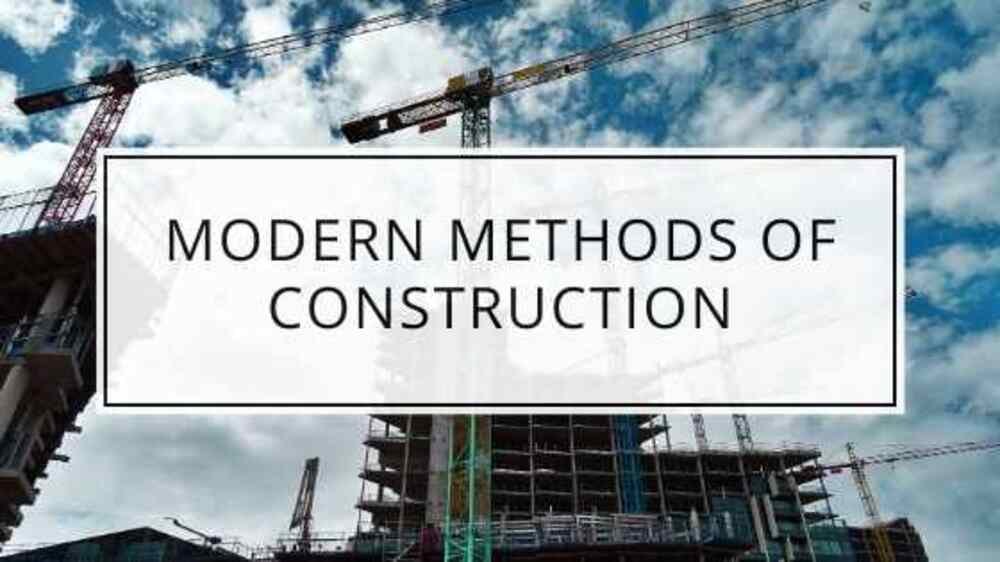Techniques in Building Construction: A Comprehensive Overview
Techniques in Building Construction: The construction industry has evolved significantly over the past few decades, thanks to the adoption of modern techniques and technologies that improve efficiency, safety, and sustainability. Whether constructing an office building, home, or school, understanding the best practices and techniques in building construction is crucial for ensuring durability and success. This article highlights key methods used in the construction industry, with a focus on fasteners and their critical role in maintaining structural integrity.
1. Prefabrication and Modular Construction
Speed and Efficiency in Construction
Prefabrication involves producing building components, such as walls or roof sections, off-site in controlled environments and then transporting them to the construction site for assembly. Modular construction takes this a step further by creating entire modules (rooms, sections of buildings) that are fully completed off-site.
Both methods provide several benefits:
Faster Construction Timelines: Prefabrication significantly reduces on-site construction time, which is crucial for office buildings and schools with tight project schedules.
Cost-Efficiency: Reduced labor time and fewer weather-related delays lower overall costs.
Improved Quality Control: With components manufactured in factory settings, quality control is more consistent.
Modular construction is particularly useful for schools or home additions where disruption needs to be minimized.
2. Sustainable Construction Techniques
Eco-Friendly Building Practices
Sustainability is increasingly central to modern building construction. Techniques such as energy-efficient design, use of recycled materials, and green building certifications like LEED (Leadership in Energy and Environmental Design) are becoming common.
Sustainable Techniques Include:
Energy-Efficient Design: Incorporating natural lighting, energy-efficient windows, and smart HVAC systems reduces energy consumption.
Recycling and Reusing Materials: Using reclaimed wood, recycled steel, and other materials minimizes the environmental impact of construction.
Sustainable Roofing Systems: Green roofs (roofs with vegetation) or solar panels are often used in both office and school buildings to improve energy efficiency.
Sustainable practices reduce the environmental footprint and are increasingly mandated for public buildings, making them critical for schools and government offices.
3. The Importance of Fasteners in Building Construction
Securing Structural Integrity
Fasteners may be small components, but they play a crucial role in ensuring the stability and safety of any building. Whether you’re working on a home, office, or school, choosing the right fastener is essential to ensure long-term structural integrity.
Common fasteners used in building construction include:
Screws and Bolts/ baut & mur: These fasteners provide strong mechanical bonding for everything from wall frames to floorboards.
Nails: Often used in light-frame construction, nails are popular in home building, particularly for timber framing.
Anchors and Brackets: Critical for connecting structural elements such as beams and walls, these components ensure that a structure can handle load-bearing stresses.
Selecting the Right Fasteners:
Material: Fasteners must be made from durable materials like stainless steel or galvanized metal to resist corrosion, especially in outdoor applications.
Load-Bearing Capacity: Different fasteners are designed for varying load capacities. Office buildings, for instance, require heavy-duty fasteners for beams, while homes may use lighter, more flexible options.
Specialized Fasteners for Schools: Fasteners in school buildings need to meet strict safety standards, especially in seismic zones or areas prone to high winds.
4. Concrete and Steel Frame Construction
Core Building Materials
For larger structures, concrete and steel remain the primary materials of choice due to their strength and durability.
Concrete Construction: Reinforced concrete is widely used in foundations, walls, and other critical components of schools and office buildings. It provides excellent fire resistance and can be molded into various shapes, offering flexibility in architectural design.
Steel Frame Construction: Steel is favored for high-rise office buildings because of its load-bearing capacity and flexibility, especially in seismic areas.
These materials are essential not just for the structural framework but also for ensuring the longevity and safety of the building.
Integrating Fasteners with Concrete and Steel
Fasteners used in concrete and steel construction must withstand high stress. Specialized fasteners like concrete screws, expansion anchors, and steel bolts are designed to integrate seamlessly with these materials, ensuring that the structural components remain securely connected.
5. Smart Building Technologies
Innovating with Digital Tools
Advances in technology are transforming the construction industry. Smart buildings, which integrate automation systems for lighting, HVAC, and security, are becoming increasingly common in office environments and schools.
Building Information Modeling (BIM): BIM allows for 3D modeling of a building’s entire lifecycle, improving collaboration between architects, engineers, and contractors. This is crucial for ensuring fastener placements and structural components are accurately planned.
Smart Materials: Self-healing concrete and energy-efficient windows that adjust to weather conditions are examples of smart materials gaining traction in modern building construction.
These technologies help reduce operational costs while ensuring the building remains adaptable to future needs.
Conclusion
The world of building construction is continuously evolving, and understanding the latest techniques is key for ensuring successful projects in various sectors. Whether you’re working on a home, office, or school, employing modular construction, sustainable practices, appropriate fasteners, and modern materials like steel and concrete can make all the difference. As fasteners play a crucial role in maintaining the stability and safety of structures, their selection should be done with care, ensuring that they meet the specific demands of the project.
By staying informed about these techniques and their benefits, builders and contractors can create safe, durable, and efficient structures that meet the growing demands of the industry.


![The Best Tools for Managing Search Engine Optimization[SEO] in Dubai](https://softnewsdaily.com/wp-content/uploads/2024/10/seo-links-webinar-hand-cyberspace-concept-768x768.jpg)



